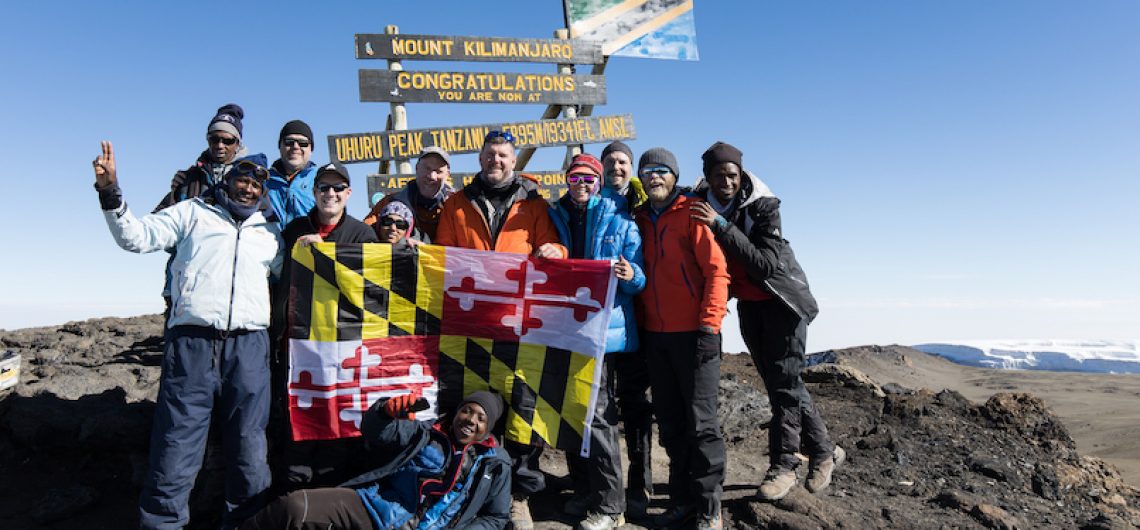Getting to the summit of Mount Kilimanjaro, Uhuru Peak is by far one of the most demanding parts of climbing the mountain reported by most of your past clients. You’ll need to get as much rest as possible when you get to Barafu Camp. Prepare your daypack as soon as you arrive, because your summit hike will begin at about 11 p.m.
We return to our tents after an early dinner, but sleep may be difficult to come by at this height and with the anticipation of what lies ahead.
Your team will bring a hot drink at 11 p.m., and there will be refreshments in the mess tent until we start climbing at about midnight. In your daypack, keep your headlamp, water, food, and any other necessities.
There are a number of things you may do to prepare for your summit trip.
1. Maintain a constant temperature.
By ensuring that your body temperature is constant, you may save energy by preventing your body from working excessively to cool down or heat up.
You should be somewhat cool when you begin walking, so take off your down or over jacket shortly before you begin. When you come to a complete halt for your “maintenance stop,” you must instantly put on your down or over the jacket to stay warm. This will aid in energy conservation.
2. Eat and drink plenty
You must “fuel your climb” to guarantee that you have the energy to summit and descend. On summit day, you’ll be walking for 13-15 hours, and you’ll likely consume around 4000 calories.
For summit day, we recommend bringing a variety of foods that you enjoy and are simple to eat, such as candy bars, crisps, cookies, trail mix, fruits, nuts, energy bars, and hard sweets.
3. Effective use of stops
We will have “maintenance pauses,” not rest stops, along your summit ascent; you must make the most of this time to ensure that you are prepared for the following step. Plan ahead of time what you’ll need to do: change your clothes, go to the bathroom, eat and drink, and, most essential, put on something warm before you stop to minimize heat loss.
4. Maintain a steady and slow pace.
Our guides will establish a speed that they believe is appropriate for you, and you should endeavor to keep up with it. If you walk too rapidly, you risk altitude sickness, and if you walk too slowly, your walking day will become impossible to complete. You’ll get there if you just keep going.
One step ahead of the other. We arrive at the crater rim before dawn. The sun will rise above Mawenzi, providing amazing 360-degree vistas. Glacial icefields, sometimes known as the “Snows of Kilimanjaro,” may be seen looking down into the crater.
It’s another 1-2 hour climb from the crater rim to Uhuru Peak, the Roof of Africa, the world’s tallest free-standing peak at 19,341 feet above sea level.
How cold is it at the summit, Uhuru Peak?
As you progress through Mount Kilimanjaro’s natural zones, the temperature drops. Temperatures at Mount Kilimanjaro’s peak, Uhuru Peak, can drop to 20 to -20 degrees Fahrenheit at night (-7 to -29 degrees Celsius). Mount Kilimanjaro develops its unique weather patterns due to its tremendous height.
Descending Kilimanjaro from Uhuru Peak’s Summit
It’s time to return to Barafu Camp after we’ve taken our photographs and congratulated each other on our accomplishments. It can be difficult to descend. If you have knee difficulties, this is the moment to put your knee brace on.
Balance yourself with your poles and go gently. The increased oxygen in the atmosphere will be a pleasant respite from the thin air at the peak as you descend.
Before descending to our final camp on the mountain, we’ll stop for lunch in Barafu Camp. You should obtain a decent night’s sleep, exhausted and elated.
The next morning, you’ll have a 3- to 4-hour hike through the forest, primarily downhill, down to the trailhead, where you’ll be brought to your post-climb hotel accommodation.
![]()

